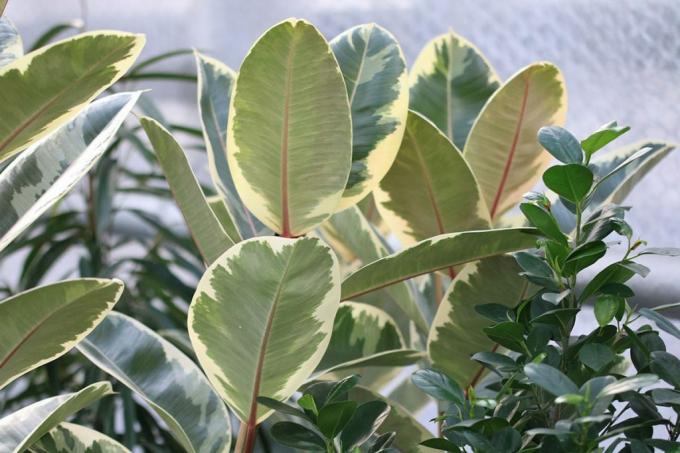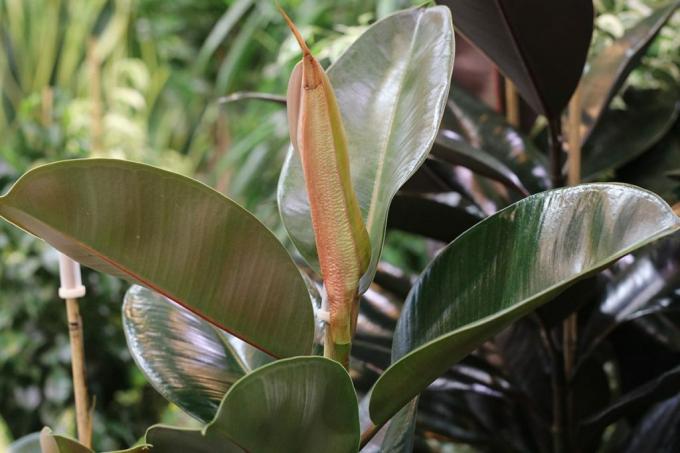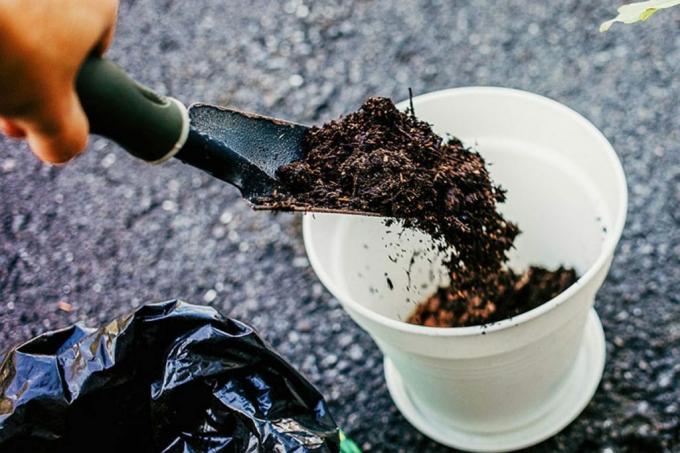
table of contents
- time
- Planter
- Substrate
- Hydroponics
- frequency
- proceed
- frequently asked Questions
If you need to repot a rubber tree, there are a few things to keep in mind. We show you what is important and what needs to be considered.
In a nutshell
- the best time is spring
- Drainage is important
- The frequency of repotting depends on the age of the plant
- Hydroponics is possible
- Stability must be given
time
The rubber tree is best repotted in early spring. It is therefore ideal to carry out the measure before the first formation of new shoots. This means that the time is between February and March. In some cases, however, the substrate and planter can and must be changed if:
- the substrate is used up
- the root ball becomes too big
- the stability is no longer given
- there is an infestation with pests
- Rot or mold appear

The time of year then doesn't matter as a quick change is required.
Tip: As soon as the roots protrude from the bottom of the pot, wchoose a larger and taller vessel. The difference should be at least a hand's breadth or about ten centimeters. This considerably reduces the effort for repotting.
Planter
The chosen flower pot should meet the following criteria:
- about twice the size of the root ball
- safe water drainage
- stable
- stable
Tip: Put a layer of drainage at the bottom of the pot to keep the roots out of the water. Coarse gravel, ceramic shards and small stones are suitable for this.
Substrate
Commercially available potting soil is easiest. However, mix this with sand or fine gravel. If you want to use a different substrate, pay attention to the following factors:
- permeable and loose
- moderately nutritious
- does not tend to condense
Hydroponics
Another option besides normal soil is to use hydroponics. However, you should only carry out this changeover with young plants. Older specimens often cannot tolerate the change from substrate to expanded clay and die or are at least severely weakened and thus susceptible to diseases and Pests.
frequency
How often you have to repot a rubber tree depends on various factors. These include:
- Age of the plant
- Size of the roots
- Size of the planter
Young rubber trees grow relatively quickly. Therefore, they have to be moved into a larger planter correspondingly often. A change is recommended annually or every two years. Older specimens grow more slowly. They can therefore remain in the substrate for a significantly longer period of time. Three to a maximum of five years are possible.

Note: The larger you choose the planter, the longer it will hold liquid and nutrients. Repotting is required less often and so is the effort for that other care is reduced. In addition, the stability is increased.
proceed
When repotting a rubber tree, the steps involved are relatively simple. The following guide shows how to do it:
-
Remove earth: Thoroughly remove the used substrate. After careful dry cleaning, you can gently rinse off the root ball. This prevents the spread of pests and pathogens and improves the absorption of nutrients.
-
Perform control: Now check the roots for possible damage, rot and mold. Separate the affected parts of the plant with a clean cutting tool and dry the cut surfaces in the air for a few hours.
-
Insert drainage: Then put in the drainage at the bottom of the pot to keep the roots away from the irrigation water.
- Fill up with fresh substrate: Put so much soil in the planter that only the trunk lies above the substrate. Press the earth down and use light pressure for this. A final pouring is advisable. Then let the excess water drain off completely.

Tip: If you want to ensure increased stability, put stones in the planter. This weighs it down and does not tip over so easily. This is particularly recommended for very tall rubber trees.
frequently asked Questions
When the rubber tree is very tall, the top can be cut off and placed in hydroponics. Over time, roots develop. This can be recognized by the fact that the plant is developing new leaves and can no longer simply be pulled out of the substrate.
Repotting in early spring is also the ideal time for propagation by cuttings. The easiest way to do this is to cut the top of the rubber tree and insert the section into substrate or hydration.
No, additional fertilization is not required directly after repotting. The plant is supplied with nutrients from the fresh soil.



